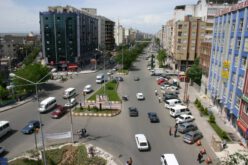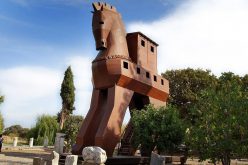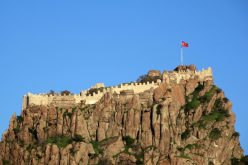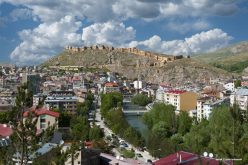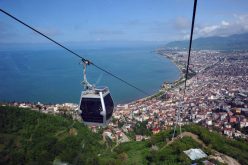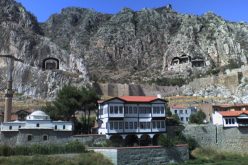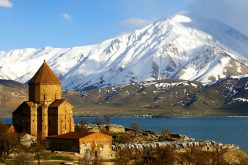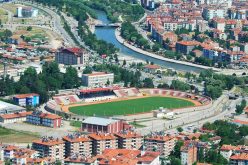Muş
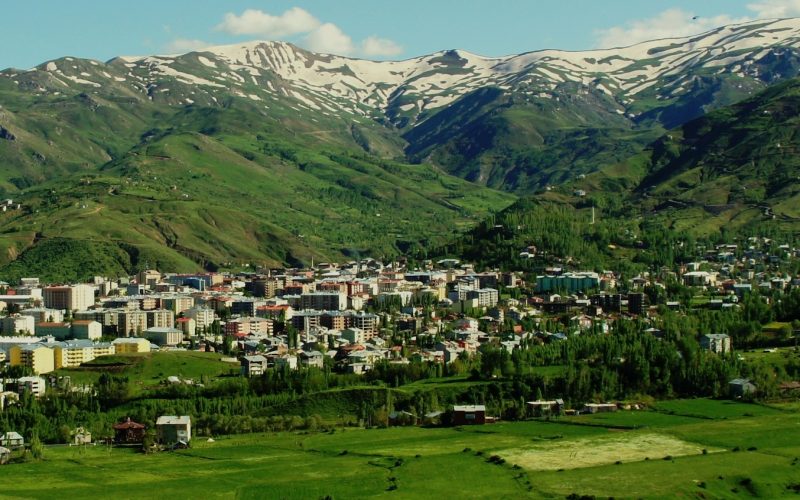
Mus
Mus, in eastern Turkey, is a naturally beautiful place in a rare setting, Set amidst high mountains on all sides, lakes and lush green plains, Mus is a place you must visit to view nature up close. It stands on the tectonic faults of Anatolia and has a typical continental climate. The town was found in Araratian Kingdom (known also as Urartu). During the Middle Ages it was the chief town of Armenia’s Taron province. Today the city is populated by citizens of Turkmen, Kurdish and Arab origins, the majority being Sunni Muslim Kurds.
There are a few ancient remnants including a few citadels and the Aslanhane Caravanserai. It is considered one of the early centers of the Armenian civilization and housed ancient Armenian churches until the 1960s. The town was the seat of a diocese of both the Armenian Apostolic as well as the Armenian Catholic Churches. There are mosques from the Seljuk period, like the Alaeddin Pasa, Haci Seref, and Ulu Mosques. Mus has been ruled by Median, Persian, Armenian, Byzantine, Abbasid, Seljuk and Ottoman empires.
Places to Visit ;
Ulu Mosque was built by sheikh Muhammed-i Mağribi. After his death was buried in the courtyard of the mosque. Because of the architectural specialities blieved was built in second half of 14th century. The mosque minarets in the earthquake damage in 1968 and 1972 have been repaired in accordance with fact. Hacı Şeref Mosque is located at the center of the Muş province inside the Arslanlı Inn and was constructed in 1318 by Abdulhamit Han.
Alaaddin Bey(Pasha) Mosque: The governor of the city was built by Mr. Aladdin in 18th century. The minaret of the mosque is decorated with floral motifs cylindrical body and a square base, two-color cut stone structure.
Alaaddin Bey Bath: Bath is in the city center and was built by Alaaddin Bey at the same time with Alaaddin Bey Mosque. One of the recent work of Ottoman baths is still used today.
Bath with Rose: One of the baths were destroyed in natural disasters of Mus is Bath with Rose. The most important feature of the baths, “Turkish triangle” is used. Triangular carrier to the dome allows this task.
Traditional Muş Houses: Street layout is a typical Turkish itself. Residential architecture in the formation of the customs and lifestyles and needs arising from the role played great. The coercive effect of climate and geography are among other factors. Houses are generally two-floor buildings are rising in the back yard. Is associated with street entrances. Besides food stores and booths in the courtyard seating is used. There are many stables in the house with them. The window edges of the culture of the Seljuk influence was built in the style of helmet dome. Directly visible from the outside even though the helmet looks simple and has an aesthetic appearance. The development of the technical architecture was defeated a few of these houses in the city center is still possible to come across.
Varto Kayalıdere Historical Site (Citadel Town): It is in the Kayalıkaya Village which 40 km away from the central town. Kayalıdere was an Urartu settlement. Result of the excavations under the direction of the British Institute of Archaeology Professor Dr. Seton Lloyd the settlement for Urartu was found in 1965. Also castles, temples, wine cellar, graves and small finds were uncovered during the excavations.The citadel is very stable and at the temple statues, buttons, needles have been found that belongs BC 7th century . These finds are on display in Ankara Museum of Anatolian Civilizations.
Yağcılar (Evran) Tumulus: Studies have been concentrated in certain places. Yağcılar Tumulus is 24 km away from Muş at the northwest. On the Mus-Elazığ road, 1700m forward after the Murat Bridge.
Muş Citadel: Muş Citadel is in the city center. The Castle is one of the oldest places in city. Armenian feudal lords in the area until you connect to the Abbasid caliphs was wars. Armenian feudal lords of the castle, then for the administration of the environment and were commissioned as officers. Muslims conquered Muş and also the citadel in Hz. Ömer period. The war lasted for many years on soil structure was destroyed. Arab, Seljuk and Ottoman cemeteries which had been destroyed in the west of the castle. Today it is a popular picnic place for public.
Hasbet Citadel: Hasbet Citadel is on a slope that east extension of Kızıl Ziyaret Mountain that south of the Muş. Two castle and city walls are still partly standing. Other parts were destroyed in natural disasters. Located two largely destroyed watchtower at the foot of the castle a village ,Soğucak.
Muşet Citadel: Muşet Citadel is in the Kızıl Ziyaret Mountain at the south of Mus. Mus name has become synonymous with it. Urartus are those who are estimated to be the first. Appearance may have later become today’s medieval castle. Castle was built from Khorasan mortar. It is estimated that in the past been used as police stations.
Arak Monastery (Church): It was settled in the top of the east direction of Karaçavuş Mountains that used as a plateau now. Arak (Kepenek) Village that named the monastery is at the foot of the summit. Arak means wine in Persian. The village used as a warehouse and remove the grape juice and wine here. There is a bell tower 200-250 m away from the monastery. Roman-style monastery stands out in materials and workmanship.
Çengilli (White) Church: Christians accepted the white church is sacred and they used as a fire temple it. Sasanis came after the Roman period and they transformed Christian sanctuary in BC 399. The Chuch is 20km away from Yaygin Town and 60 km away from the Mus city centre. There is a Church at the village center that took name of the material that made from. Observed a large complex that almost all of the structure is destroyed. Only the eastern part of the eastern wall of the vault and was able to survive at the level of the arch. Statements of villagers, “Erzurum Cultural and Natural Heritage Protection Committee” approved by the facts, including the all new buildings in the village mosque, this church is that the stones are made of. Standing up to the 1950 structure is approximately 300-350 rooms. Unfortunately, today outside the east wall is a remnant will helpful information about the size. There are still remnants of the church. Since 1988, with an intense interest in the Christian religions are visited by tourists. Restoration of the church and necessary to ensure access to this material will also provide an intense interest.
The Virgin Mary Church: In the city of Mus, the Minare is the neighborhood. Precise date of construction is unknown. Çanlı Church (Surp garabet Monestry): Church is situated in the village Yukarı Yongalı that bound Yaygın District. The first was built in the “Temple of Fire” was used as a church, by the Sassanid Christians worship was opened in 399 years. The ruins still exist today, the church, where foreign tourists is one of the most popular. Muş dense woodland to the north of the Sahara, vineyards and orchards in two pieces with the imposing dome of a church. There are hundreds of rooms in the four patriarchs and kings.
Haçlı (Kazan) Lake : The lake is located on the southeast of the Bulanık district and the waters of the lakes are mostly muddy. Various fresh water fish, mainly carp could be found in the waters of the lake.
Akdogan Lakes (Great and Small Hamurpet) : The great Akdoğan lake is located to the east of Varto district center and has a surface area of approximately 11 km². The fresh water fish like carp and trout could be founded in the lake. The surrounding area of the lake hosts hunting animals like beaver, wild duck and crane.
Kaz (Goose) Lake : This small lake is located at the northeast section of the Aktuzla locality of Malazgirt district and is a carstic lake. Mus has a continental climate with freezing, snowy winters and hot and very dry summers.
Write a Comment
Only registered users can comment.




